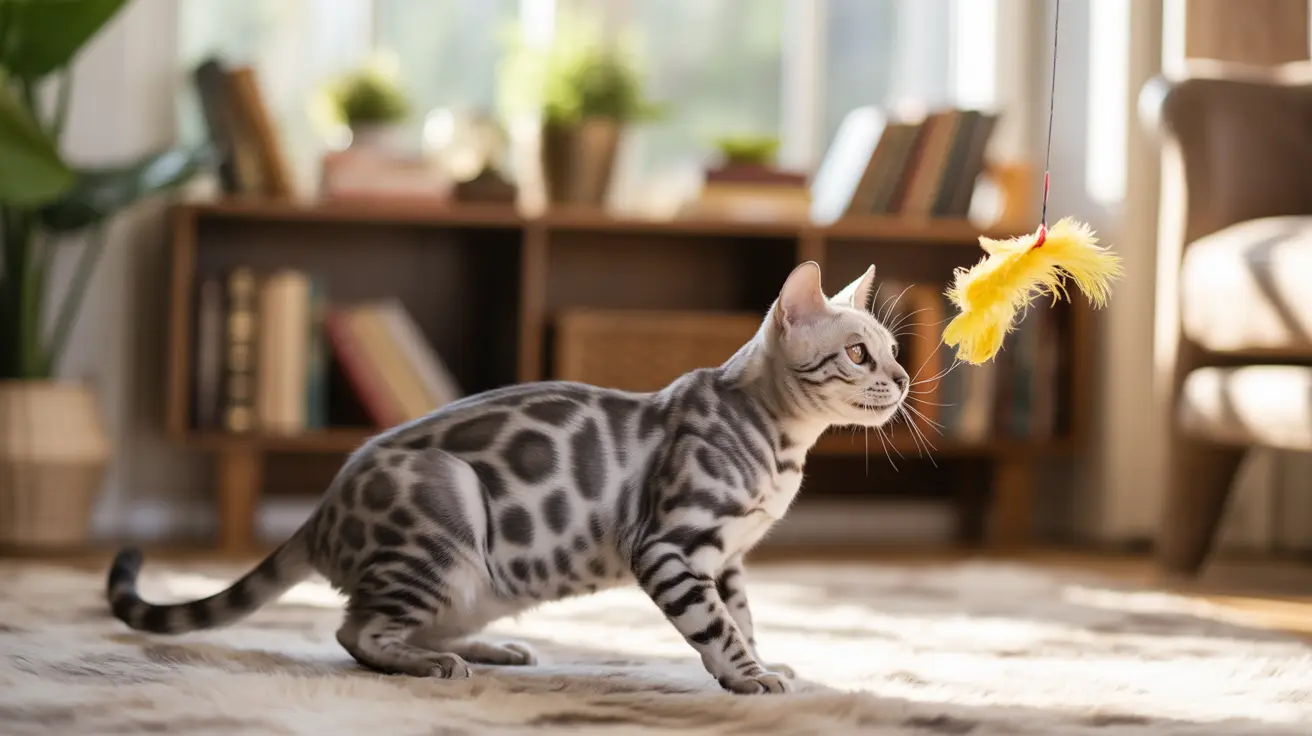The Evolutionary Origins of Cat Stalking
Domestic cats share an remarkable 95.6% of their DNA with tigers, and their stalking behavior is a direct inheritance from their wild ancestors. Despite diverging from large cats nearly 11 million years ago, house cats maintain these deeply embedded hunting instincts, even when well-fed.
As natural ambush predators, cats use stalking as their primary hunting strategy. This behavior allows them to approach prey stealthily and maximize their chances of a successful catch – a skill that remains hardwired in their brains regardless of domestication.
Why Cats Display Stalking Behavior
Cats stalk for various reasons beyond their predatory instincts. Understanding these motivations can help you better respond to and support your cat's natural behaviors:
Mental Stimulation and Play
Stalking serves as both entertainment and practice for cats. Through this behavior, they maintain their hunting skills while engaging in mentally stimulating activity. Even indoor cats need these opportunities to express their natural instincts.
Social Interaction and Communication
When cats stalk their owners or other pets, it's often an invitation to play or interact. This behavior can indicate they're seeking attention or wanting to engage in social bonding through play-hunting activities.
Reading Your Cat's Stalking Body Language
Cats display specific physical signals when stalking that can help you understand their intentions:
- Crouched position with body low to the ground
- Forward-pointing ears and whiskers
- Dilated pupils showing focus and excitement
- Tail held low or twitching
- Characteristic rear-end wiggle before pouncing
How to Support Healthy Stalking Behavior
To ensure your cat can express their natural stalking instincts safely:
- Provide interactive toys that mimic prey movement
- Create enriching environments with hiding spots and climbing areas
- Engage in daily play sessions using wand toys or laser pointers
- Rotate toys regularly to maintain interest
- Use puzzle feeders to simulate hunting for food
When Stalking Becomes Concerning
While stalking is normal, certain behaviors may indicate problems:
- Aggressive stalking accompanied by hissing or growling
- Frequent attacks on people or other pets
- Stalking triggered by stress or anxiety
- Sudden changes in stalking patterns
Frequently Asked Questions
Why do cats stalk their owners or other pets in the house?
Cats stalk their owners and other pets primarily for play and social interaction. This behavior can indicate a desire for attention, exercise, or bonding through play-hunting activities. It's usually harmless unless accompanied by aggressive signals.
How can I tell if my cat's stalking behavior is playful or aggressive?
Playful stalking typically involves relaxed body language, forward-pointing ears, and no vocalizations. Aggressive stalking may include flattened ears, hissing, growling, and a tense body posture. The context and your cat's overall demeanor are important indicators.
What body language signs indicate a cat is about to pounce or stalk?
Look for a crouched position, wiggling hindquarters, dilated pupils, and forward-pointing whiskers. The tail may twitch or flick, and the cat will maintain intense focus on their target.
How can I redirect my cat's stalking behavior to prevent attacks on people?
Provide appropriate outlets through interactive toys, scheduled play sessions, and environmental enrichment. Never encourage hand or foot play, and consistently redirect stalking behavior toward appropriate toys.
Does providing more toys and playtime reduce a cat's stalking due to boredom?
Yes, regular play sessions and a variety of engaging toys can significantly reduce unwanted stalking behavior by satisfying your cat's natural hunting instincts and providing mental stimulation.
Remember, stalking is a natural and healthy behavior for cats when properly directed. By understanding and supporting this instinct, you can help your feline friend maintain physical and mental well-being while strengthening your bond through appropriate play.






